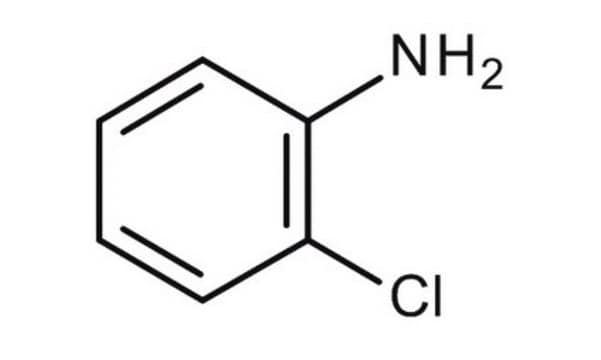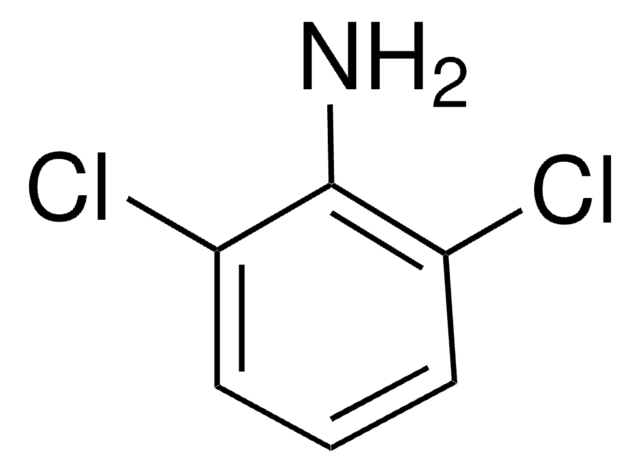About This Item
Recommended Products
grade
technical
Quality Level
Assay
≥98.0% (GC)
form
liquid
refractive index
n20/D 1.588
bp
208-210 °C (lit.)
solubility
water: soluble 5.13 g/L at 20 °C
density
1.213 g/mL at 25 °C (lit.)
SMILES string
Nc1ccccc1Cl
InChI
1S/C6H6ClN/c7-5-3-1-2-4-6(5)8/h1-4H,8H2
InChI key
AKCRQHGQIJBRMN-UHFFFAOYSA-N
Looking for similar products? Visit Product Comparison Guide
General description
- 2-Chloroaniline is widely used in polymer, rubber, pharmaceutical and dye industries.
- Determination of 2-chloroaniline in polymer industrial wastewater has been examined using HPLC with on-line microdialysis.
- Degradation of 2-chloroaniline in water by ozonation as well as by photolysis (UV-light of 254 nm) and radiolysis (γ-rays) in the presence of ozone has been investigated.
Signal Word
Danger
Hazard Statements
Precautionary Statements
Hazard Classifications
Acute Tox. 3 Dermal - Acute Tox. 3 Inhalation - Acute Tox. 3 Oral - Aquatic Acute 1 - Aquatic Chronic 1 - Eye Irrit. 2 - Muta. 2 - STOT RE 2
Storage Class Code
6.1A - Combustible acute toxic Cat. 1 and 2 / very toxic hazardous materials
WGK
WGK 3
Flash Point(F)
221.0 °F - closed cup
Flash Point(C)
105 °C - closed cup
Choose from one of the most recent versions:
Already Own This Product?
Find documentation for the products that you have recently purchased in the Document Library.
Customers Also Viewed
Our team of scientists has experience in all areas of research including Life Science, Material Science, Chemical Synthesis, Chromatography, Analytical and many others.
Contact Technical Service


















